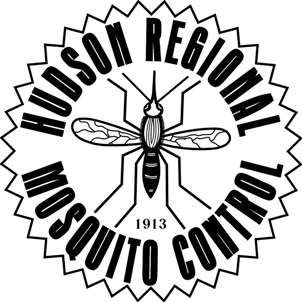Mosquito Biology
General Information
Mosquitoes are more than just a nuisance. Worldwide, mosquitoes cause more human deaths every year than any other organism. Over one million people die each year from Malaria alone, mostly children. Mosquitoes and the diseases they transmit have conquered armies, prevented development in some countries, and caused enormous financial loss. In the United States we typically do not worry about vectored diseases, but mosquitoes transmit several diseases in the US such as West Nile virus, Eastern equine encephalitis, Saint Louis encephalitis, Lacrosse encephalitis, and dog heartworm.
Approximately 30 species of mosquitoes occur in Hudson County. Some mosquitoes can occur as early as March, but the peak mosquito season is from June through August. Mosquito populations are greatly influenced by weather with hot wet conditions being optimal for mosquito production. While not all mosquitoes bite humans, many do. Our job is to reduce the numbers of mosquitoes, not only to improve the comfort of the citizens of Hudson County, but to protect their health as well.
Mosquito Life Cycle
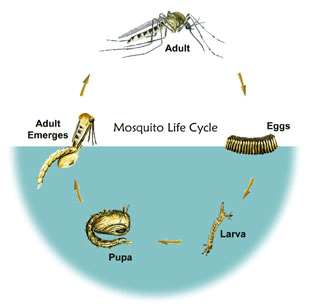
Mosquitoes, like all flies, undergo a complete metamorphosis during their development. The adult females lay eggs on existing water or in areas that will flood. The eggs soon hatch into larvae. The larvae develop into pupae and the adults emerge from these pupae. All stages are aquatic except the adult. The complete life cycle can take place in about a week under optimal conditions, or may take several months depending upon the species and environmental conditions.
Eggs
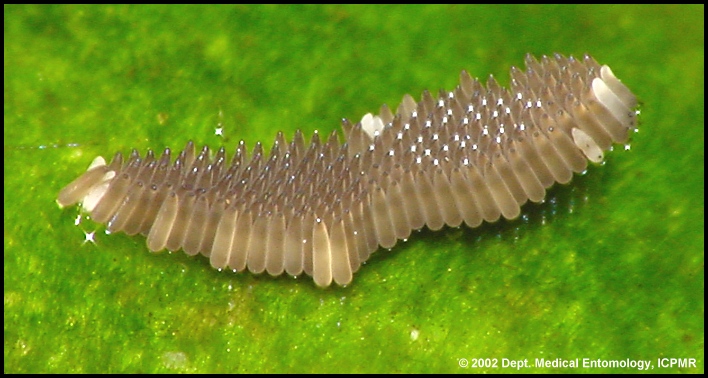
After the female mosquitoes have taken a blood meal, they use the protein in the blood to develop their eggs. Females can lay several hundred eggs at a time. The eggs are about ½ mm long and dark brown or black. Some mosquitoes such as Culex spp. glue their eggs together in a raft on the surface of the water. Others, such as Anopheles spp. lay their eggs individually on the surface of the water. The eggs of these permanent water mosquitoes usually hatch in 1-3 days depending upon temperature. Alternatively, floodwater mosquitoes such as Aedes spp. and Ochlerotatus spp. lay their eggs on moist soil. These eggs will remain dormant and will only hatch when they come in contact with water caused by rain, melting snow, or other floodwater.
Larvae
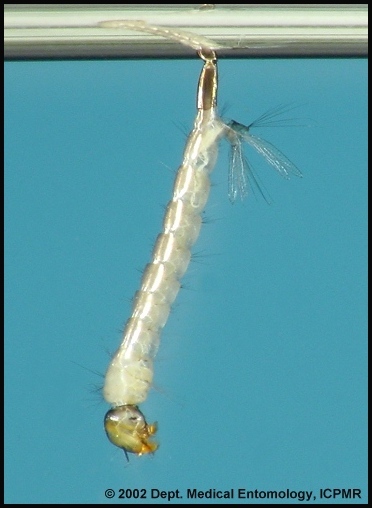
When the eggs hatch, larvae emerge. The larvae, commonly known as wigglers or wrigglers, live in the water. Most larvae suspend themselves beneath the surface of the water and breathe air through a tube at the tip of the abdomen. There they feed on microorganisms and particulates as they float by. As the larvae grow they shed their skin four times, growing larger with each molt, before becoming pupae. The duration of the larval period depends upon the species and the water temperature. Under optimal conditions it can take only a few days. The larvae of some species breathe by attaching to aquatic plants. These mosquitoes spend the entire winter as larvae, not emerging until the following summer.
Pupae
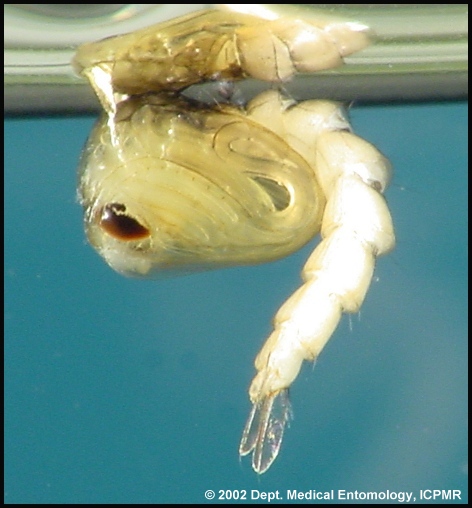
After the last larval molt the mosquito becomes a pupa. Mosquito pupae live in the water and breathe air from the surface of the water through a pair of tubes on their backs. Although the pupae do not eat, they are very mobile and can move through the water with a flip of their abdomen. During this period the larval tissues change into the adult tissues. The pupal stage lasts only a few days, after which the adult emerges from the pupal case on the surface of the water.
Adults
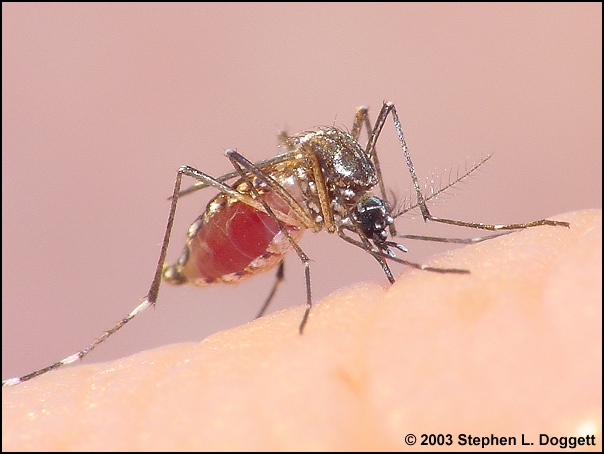
When the mosquitoes first emerge from the pupae, their bodies are soft and they are unable to fly. The mosquitoes rest as their bodies harden. Within 3-5 days after emergence the mosquitoes mate. Females only need to mate once. After mating, the female searches for a blood meal. Only the female mosquitoes bite. The blood is used to develop her eggs, not for energy. It is during this blood feeding that mosquitoes acquire the diseases they transmit. Both male and female mosquitoes feed on nectar for energy. Not all mosquitoes bite people, different mosquitoes prefer to feed on different animals. After taking a blood meal, female mosquitoes will find a shaded place to rest, digest the blood, and develop her eggs. Within 3-5 days she is ready to lay her eggs. Once she had laid all of her eggs, she seeks out another blood meal and the process starts over. One female can usually lay 1-3 batches of eggs in her lifetime.
Related Insects
There are many other insects that are often mistaken for mosquitoes. Check the link below to make sure that you are not dealing with one of these look-alikes.
